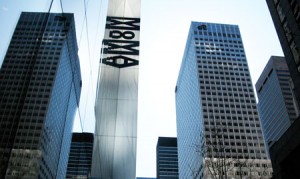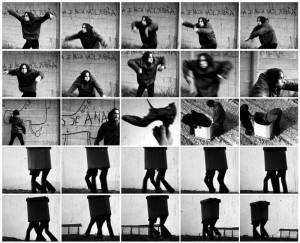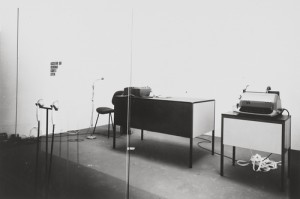This exhibition will focus on bonds between Latin America and Eastern Europe during the 1960s, 1970s and 1980s, how they balanced and influenced each other through connections and parallels, several artists of the time have explored this coherency and still work on it
Transmissions emphasizes multiple points of contact, mainly and most of the time initiated and sustained through collective actions and personal exchanges between artists.
It implies possible counter-geographies, realignments, alternative models of solidarity, and correspondences linking art practices in different parts of the world.
Nearly 300 works is displayed to deal with the cultural production of these decades in depth, the numerous experimentations and challenged established art-historical narratives in the West and frameworks dictated by the Cold War.
At that time, we have observe a new awakening of human consciousness with the widespread student protests of 1968, artists were working in distinct political and economic contexts, from Prague to Buenos Aires, they developed cross-cultural networks to circulate their artworks and ideas. They wanted to share, to exchange and to explore. These networks functioned largely independently of traditional institutional and market forces
This was the translation of their inner desire which was to start from scratch, to transcend the borders established after World War II, but also other institutions, whether they were local or international, and the artists of this period were using their works as weapon, weapon of freedom in response of military repression.
The Museum of Modern Art’s collection took the initiative to do Transmissions, which brings together landmark works by Eastern European artists, among them Geta Brặtescu, Tomislav Gotovac, Ion Grigorescu, Sanja Iveković, Dóra Maurer, and the anti-art collectives Gorgona, OHO, Aktual, and Fluxus East.
As well as Latin American artists such as Beatriz González, Antonio Dias, Lea Lublin, and Ana Mendieta.
Besides, a particular attention is paid to the group of Argentine artists gathered around the influential Instituto Torcuato Di Tella, which is composed of Oscar Bony, David Lamelas, and Marta Minujín, who through their works confronted the aesthetic and political implications of mass media communication during a vibrant, experimental period of technological innovation and political tension.
The featured artists circumvented the political status quo through unorthodox and ephemeral art forms.
Thanks to mass media and communication technologies, those artists explored novel ways of bringing art into daily life in order to reach a wider public and to influence society.
Many of the recent acquisitions in the exhibition were the result of research initiated through C-MAP (Contemporary and Modern Art Perspectives), MoMA’s cross-departmental initiative aimed at expanding curatorial expertise in a global context.
Organized by Stuart Comer, Chief Curator, Department of Media and Performance Art; Roxana Marcoci, Senior Curator, Department of Photography; and Christian Rattemeyer, Associate Curator, Department of Drawings and Prints; with Giampaolo Bianconi and Martha Joseph, Curatorial Assistants, Department of Media and Performance Art.



 Entrez votre email pour être toujours au courant des nouveautés !
Entrez votre email pour être toujours au courant des nouveautés !